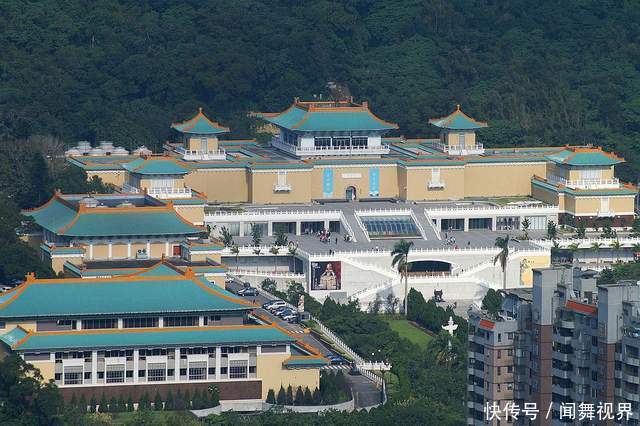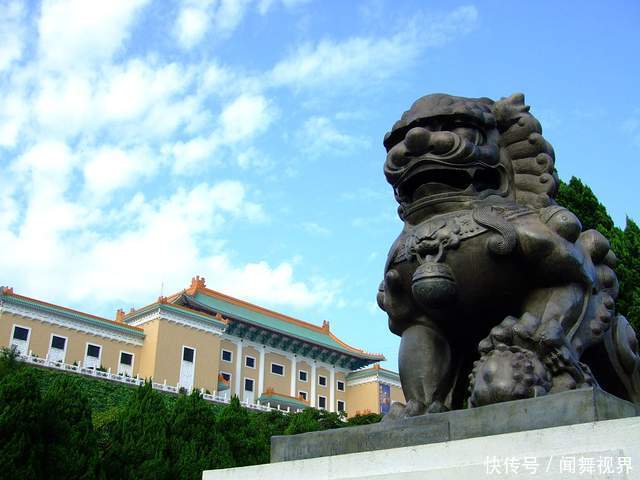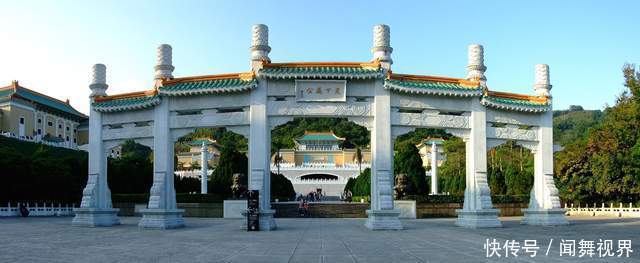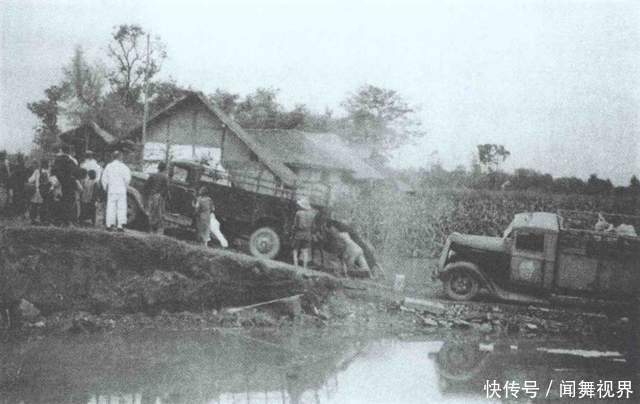Wen Jiang Hu Xiao Wu
“There is absolutely no such thing, please don’t listen to and spread false news.”
In response to the rumors circulating on the Internet that “the island wants to take the Taipei National Palace Museum” The treasure was transferred to the United States and Japan” news, the National Palace Museum in Taipei issued a press release on the evening of the 7th, “solemnly clarified that there is no such thing.”

In some of our reports, all of them start with “Taipei National Palace Museum” To refute the rumor that the Taiwan authorities are preparing to transfer cultural relics to the United States and Japan”, but through the original text of the news released by the National Palace Museum in Taipei, it can be found that they are extremely angry at this confusing false information circulating on the Internet.
The two “clarification screenshots” marked with an oversized red cross by the National Palace Museum in Taipei and marked “This is a fake message” in oversized fonts are all from the information uploaded by individual users of the Simplified Chinese website. According to their words, “several online media reports spread in simplified Chinese characters”, and these similar false information also claimed that “Tsai Ing-wen is an unworthy descendant” and “actually wants to transfer the treasures of the Taipei Palace Museum abroad.”
These contents are also stated in the tone of the National Palace Museum in Taipei, “the most valuable 90,000 pieces of the 700,000 pieces in the collection will be transferred abroad, and the destination is likely to be the United States and Japan”, and stressed that , “It is safe to place the cultural relics of the Forbidden City in Taipei in the Forbidden City in Beijing.”
The original text of the Taipei Palace Museum’s refutation of rumors stated, “Today, this court solemnly clarifies the fact that 90,000 pieces of fine products from the nearly 700,000 pieces of the Palace Museum’s collection are going to be selected and transferred to the United States and Japan for protection. There is absolutely no such thing, please don’t listen to and spread false news.”

The reason why the National Palace Museum in Taipei is so angry and “solemnly clarified” in the face of false news may be related to their devotion to the nearly 700,000 cultural relics and works of art in their collection. Facing malicious rumors and slanders, it really hurts The hard work of this museum and librarians who have contributed to the preservation of cultural relics.
Even if we don’t want to admit it, we must face up to this reality. The so-called “National Palace Museum”, also known as the National Palace Museum in Taipei, “most of the original The collections of the Preparatory Office of the Central Museum and the National Peking Library come from the old imperial collections of the Forbidden City, Shengjing Palace, Summer Resort, Summer Palace, Jingyi Garden and Guozijian.” There are rare treasures such as the Posts of Clear Time when Snow is Fast, Early Spring, Huazigang, Yongle Grand Ceremony, and Siku Quanshu.
Even though the collection of cultural relics in the National Palace Museum in Taipei is already so rich, the National Palace Museum in Taipei can only be said to cover the essence of the cultural relics of the Chinese nation, and the more than 1.8 million cultural relics in the Palace Museum in Beijing must be added to fully present the whole. The history of ancient Chinese civilization and almost all cultural relics.
It is undeniable that almost all the cultural relics in the National Palace Museum in Taipei come from the Forbidden City in Beijing. Initiate the relocation of cultural relics to the south. The following year, when the Kwantung Army captured Jehol and advanced to Peiping, the Council of the Palace Museum decided to transport the antiquities to the south, immediately packing the cultural relics from the Palace Museum, bundling them, and transporting them to Nanjing and Shanghai in batches, and later they were all stored in the new Nanjing Chaotian Palace warehouse .

The day after the Battle of Songhu broke out, it was relocated to Nanjing and the National Central Committee The cultural relics of the preparatory office of the museum were successively moved westward to Sichuan in the south, middle and north roads. Immediately after the outbreak of the Huaihai Campaign, Weng Wenhao, who was then President of the Executive Yuan and Chairman of the National Palace Museum in Peiping, convened a council meeting on November 10, 1948. At the meeting, Hang Liwu, Zhu Jiahua, Fu Sinian, Li Ji and Wang Shijie all agreed to be elected. Various agencies select high-quality products and ship them to Taiwan.
It can be said that the batch of cultural relics stored in the National Palace Museum in Taipei has been relocated many times and avoided the ravages of war, and it is very difficult to preserve them. Cultural relics are the treasures of the Chinese nation. No one dares to do anything with them. Even if war really comes, cultural relics will not be the target of both sides. This is not just the loss of the Forbidden City on both sides, but the whole nation. Loss.
Judging from the information we have now, it is false news that the so-called Forbidden City in Taipei will transfer 90,000 fine cultural relics to the United States and Japan. However, the National Palace Museum in Taipei confirmed that they did conduct a wartime simulation exercise in July this year, and will give priority to the rescue of 90,000 historical relics of high value and less space.
One more thing, I really don’t understand what those people who make up false information think, this kind of information will not help win the hearts and minds of the people, nor will it win the “cognitive war”, it will only add to the laughing stock, and it will also hurt the Taipei National Palace Museum. The emotion of cultural relics conservation librarians.

You must know that, anyway, the National Palace Museum in Taipei is not this batch The final destination of the cultural relics. In the future, the separation of the two sides of the strait will end, and it is the best resettlement to return the cultural relics to their original places, but for now, it may be the best choice to store them in the National Palace Museum in Taipei.
The more important point is that these cultural relics and treasures are physical witnesses of the continuation of civilizations on both sides of the Taiwan Strait. , and the dignity of a national treasure.